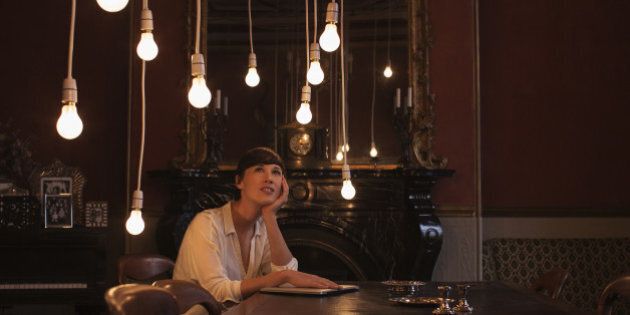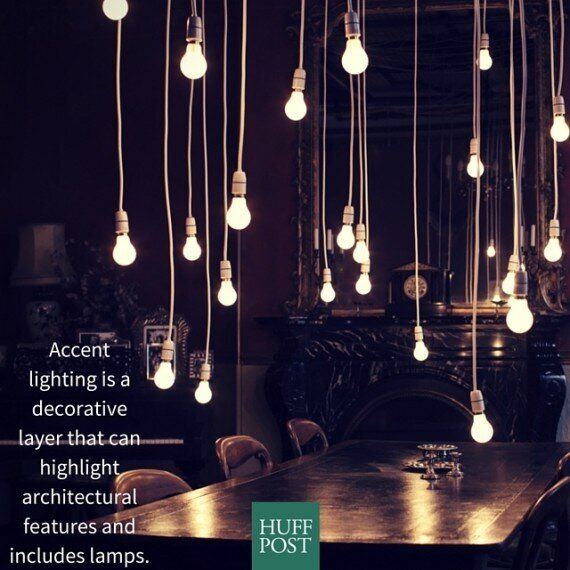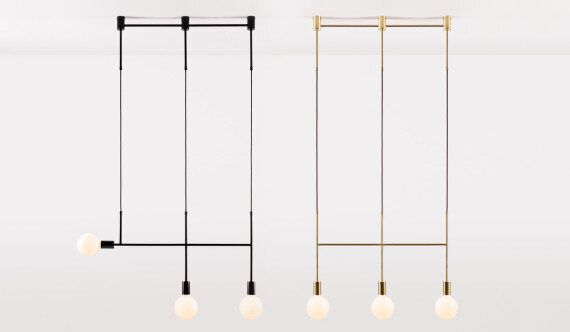
How many people does it take to choose the right light globe?
The reality is that the humble supermarket purchase can cause quite a bit of confusion. Which watt means what? Screw or bayonet fittings? And what the hell is the difference between white and warm light?
First up, a bit of an interior lighting crash course:
Ambient lighting refers to the general lighting in any space.
Accent lighting is a decorative layer that can highlight architectural features and includes lamps.
Task lighting is the final layer that is specific to the space. For example, lighting over a kitchen bench, or over a work space.
First and foremost when selecting or restocking globes it's important to note that the fittings themselves will all have a maximum wattage that the lamp holder is rated to, so you will be limited by that. The higher the wattage, the brighter the globe.
"Function and feel are important considerations. What tasks are being performed in the space will then dictate the type of globe that you need," lighting designer Volker Haug told The Huffington Post Australia.
"Filament globes that give out a warmer light are great to create atmosphere such as in a living room, café, or bar. Opal or frosted globes give more of a sophisticated, clean look which is great in an office or for task lighting as they often give out a slightly cooler light," Haug said.
To break it down into layman's terms, Haug explains the difference between filament, halogen, CFL and LED globes:
Filament, or incandescent globes produce light by heating a filament wire to a high temperature until it glows and produces light. These were designed to imitate the look of natural light.
Halogen globes are a type of incandescent globe, featuring a very small but powerful filament, which is housed within a minute bulb. They have greater efficiency than a normal filament globe, are more luminous, have great colour rendering abilities and feature an appealing colour temperature.
CFL's are one of the earlier versions of an energy saving globe. They are comprised of a gas filled tube, which is curved into a compact size. CFL's last significantly longer than any Filament globe. They also use as little as one-fifth the power of a filament globe while producing the same amount of visible light.
LED lights use multiple light-emitting diodes (LED's) as the source of the light. LED lamps are extremely energy efficient, with greater cost and power effectiveness than both Filament and CFL globe. They also have the longest globe life.
You'll also come across mirrored globes, which are popular in commercial spaces.
"Mirrored globes create a sense of 'old world glamour 'nostalgic of periods of luxury, which makes them perfectly suited to high-end or commercial spaces. Primarily this is due to their metallic finish and secondly due to their ability to create architectural lighting effects by redirecting the light."

In regards to warm versus cool light, most regular residential lighting falls into the latter category.
"Globes with a warm colour temperature (between 2200-2600 Kelvins) mimic natural sunlight and can create an enlivened atmosphere. These lamps are more so available in specialty shops. A globes with a colour temperature of 2800+ Kelvins produce a cooler light and are readily available to purchase in widespread convenience stores like supermarkets," Haug said.
"Often multiple tasks need to be performed within the same space. Therefore having a variety of lights in the one room with different colour temperatures is essential when defining what different spaces are used for. For example, in the kitchen you would have overhead direct and bright lights on while preparing meals but when you want to sit down and enjoy your meal these lights would be turned off and a warmer, softer lights would be turned on."
In terms of caring for the environment, we have good news. Haug believes it's possible to save energy without compromising the look.
"With the recent advancements in lighting technology LED lamps can now capture the warm colour temperature and filament style of an incandescent globe while simultaneously possessing the superior energy efficiency of a compact fluorescent. It is now even possible dim LED lamps, which was not achievable when the technology first appeared," Haug said.
You can also look for fittings with dimmers, and many of the new energy saving bulbs are dimmable, so even hardwired products such as pendants can be wired to a dimmer. This gives you a lot of flexibility in terms of the ambiance in the space in relation to the tasks undertaken.
Also consider layering your lights, such as having table and floor lamps as well as your ceiling and wall lights gives you more options.

Triple Side Series by Volker Haug